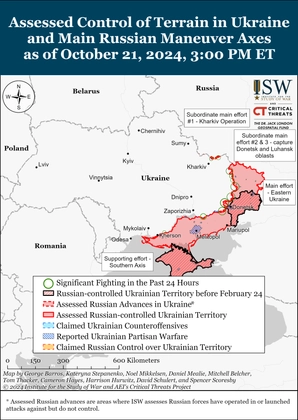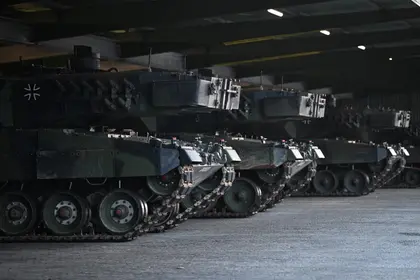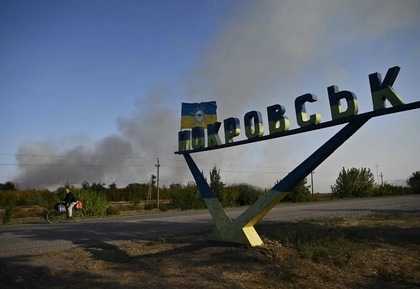The German pacifist Karl Liebknecht said that “For capitalism, war and peace are business and nothing but business.” The war initiated by Russia’s illegal 2022 full-scale invasion of Ukraine is demonstrating the proof of that assertion in spades.
What Liebknecht and most other people realize is that the main purpose of weapons manufacturers, as for all businesses in a capitalist system, is to make profit – for shareholders, salaries and bonuses for its staff and (through taxes) the government.
During peacetime this is achieved by replacing “consumables” such as ammunition used in training, modernizing in-service equipment, providing replacements for kit reaching its end-of-life and developing new technologies for the military. Levels of supply and, therefore, income and profits will increase in times of conflict as combatants will use up and lose larger quantities of military materiel.
Most conflicts since World War II have been relatively small-scale, what military analysts call “low intensity.”. Even if we consider events such as the Iran-Iraq war of the 1980s, the First Gulf War, the two Chechen wars and the ongoing war in Syria are not termed as “general war.” However, the war that has engulfed Ukraine is a different matter.
Putin may call it a “special military operation,” but in terms of intensity, casualty levels, destruction and weapons consumption it is the closest we have got to general war since 1945.

ISW Russian Offensive Campaign Assessment, October, 22, 2024
An article in the independent media platform, “openDemocracy.net” has (cynically) suggested that, from the arms manufacturers’ perspective and by implication the Western militaries’ point of view the Ukraine war could be the “perfect war” – a war in which they can provide weapons and munitions, where their own country is not involved, that might become “a violent stalemate that creates an insatiable demand for arms and the replacement of worn-out equipment.”
The only downside implied by the author of the piece, Paul Rogers, a Professor of Peace Studies at Bradford University, is that they are unable to sell to both sides.
Sadly, he may be right.
Who is profiting from the war?
A report by the Chinese publication, Global Times, [Published under auspices of the Chinese Communist Party – ed.] claims that Ukraine became the world’s third biggest arms importer and was fifth among the nations to which the US exported arms in 2022. The report goes on to quote Yuan Zheng, deputy director of the Institute of American Studies at the Chinese the Academy of Social Sciences who said:
“By utilizing proxy war between Russia and Ukraine, the US continues to consolidate its geopolitical interests in Ukraine, and its military industrial enterprises make huge profits by selling weapons.” While hardly a “neutral commentator,” he does perhaps make a valid point
The US online magazine The Nation reported in May that the US Defense budget was to rise to almost $900 billion in the coming year of which the big five US defense giants – Boeing, General Dynamics, Lockheed Martin, Northrop Grumman, and Raytheon – were slated to receive almost 20 percent of that for new equipment and services.
According to Defense News this included weapons, destined to replace items in the US military’s inventory, that were being provided to Ukraine. This included a $4.8 billion contract with Lockheed Martin for Guided Multiple Launch Rocket Systems (GMLRS) and one with Raytheon for the provision of six National Advanced Surface to Air Missile System (NASAMS) batteries worth $1.2 billion with an expected follow-on requirement to provide replenishment missiles for the following year worth $2.5 billion.
Figures published on MarketWatch.com, part of The Wall Street Digital Network suggest that the share price of the “big five” had increased by an average of 26 percent in the previous year.
The Russia-Ukraine war is “a huge profit center for the big companies,” said William Hartung, research fellow at the Quincy Institute. “At the moment, I think they're riding the wave,” he told the nonprofit news organization Analyst News in May.
It is not just US companies that are profiting. In Germany, whose military spending is the highest of all EU states, arms manufacturer Rheinmetall recorded its highest earnings ever in the last year which saw profits jump by 27 percent and shares rise 55 percent in the previous twelve months.
Another nation to benefit indirectly from the war is South Korea. In addition to the military aid it has passed to Ukraine it separately secured over $17 billion in export contracts in 2022 more than double its 2021 total according to Forbes.
Much of the attraction of South Korean weapons is that many of its systems are designed for joint operations with US forces and therefore easily integrate with weapons employed by NATO forces.
Old for New
The Kiel Institute for the World Economy (IFW Kiel) is a German independent research institute which has compiled and maintains a web-site that provides a database of the military, financial and humanitarian aid provided to Ukraine. This goes into detail to regularly breakdown, identify and itemize the levels of aid being provided to support Ukraine in its war against Russia.
In terms of military aid, it becomes readily apparent that the headline figures given to donations can be hard to breakdown. Much of the military aid provided to Ukraine originates from existing stocks and assessing its value depends very much on the accounting systems deployed by the donor nation. For instance, what is the real value of a 20-year-old tank? Is it a book value, taking into account 20 years of depreciation or is it the cost of replacing it with a new or newer model?
What is obvious is that the US is the biggest donor by all metrics but, when considering donations of aid as a percentage of both GDP and weapons stocks held, Eastern European countries, the UK, Germany and Norway stand out.
The IFW Kiel study illustrates the disparity between “old and new.” by highlighting the figures for all types of US aid during the first year of the war. Appropriated funding, the amount of funds committed by the government, was listed as $95 billion, this is the headline figure. IFW calculations then identified the accounting discrepancies which included around $6 billion, because some military aid had been assessed against replacement value (which was reported in June) and included donations made prior to the war. After correction, the think tank assessed the actual total as being a little over $76 billion.
Part of this discrepancy was the system of the “Replenishment of US stock” system provided to Ukraine from “Presidential Drawdown Authority.” This is the scheme whereby US Congress allows the President to transfer military equipment, assistance, services and weapons to foreign allies up to a predefined maximum value, which IFW assessed this to be worth around $15.5 billion.
Similarly, a large proportion of equipment provided to Ukraine from other nations came from existing stocks was done under “Circle Exchange – Ringtausch” schemes by which countries agreed to deliver weapons to Ukraine for which would receive replacement weapons. For instance:
· Germany agreed to provide Slovakia with 15 Leopard 2A4 tanks for 30 BMP-1 Infantry fighting vehicles (IFV)
· UK agreed to provide Poland with Challenger 2 tanks for an undisclosed number of T-72s
· The US agreed to provide Slovakia with a Patriot battery in exchange for S-300 Soviet-era air defense system
· Slovenia provided 28 M-55S tanks to Ukraine in exchange for 40 army trucks from Germany
· Czech Republic provided an undisclosed number of T-72 tanks for 14 Leopard 2A4 tanks and one Büffel armored recovery vehicle from Germany
· Germany provided with 40 Marder IFV in exchange for 40 BMP-1 IFVs
Whatever the source of the materiel provided much will have to be replaced by industry to ensure the donor nations restore their required defense stocks.
This is the present, what about the future?
The West will argue that the only way it could provide Ukraine with the wherewithal to defend itself from Russian aggression in time was through the passing on of existing stocks. At least up to now, it has more or less worked. The indications are that they will continue that support in similar fashion for the foreseeable future.
In the long run more has to be done. Ukraine has come to realize this and is already taking steps to become more self-sufficient in its defense needs, as President Zelensky iterated in a speech on Aug. 28.
This will not only include improving its existing military-industrial base, with projects such as the “Neptune missile” but through strategic partnerships such as that for tank repair and manufacture with the German company Rheinmetall, announced in July and the plan to manufacture howitzers in partnership with the UK’s Bae systems announced on Aug. 31.
The Ukraine war has changed the military industrial landscape. The war not only highlighted how badly the West (Asia and the Middle East too) had underestimated the malevolence of Putin and, potentially, China but also how much materiel was needed to fight such an intense war. As a result the US and others are realizing that they need to considerably ramp up their ammunition, military equipment and weapon stocks, not just in the short term to continue to support Ukraine but in the long term too, if they are not to be caught out again.
An article in the Los Angeles Times highlighted a change in the vocabulary of arms salesmen who brandish glossy brochures that talk about: “defense” instead of “warfare,” “weapons platforms” rather than “guns.”
Russia’s full-scale invasion of Ukraine has made one thing clear: “Nothing invigorates the business of war like a war.”
The views expressed in this opinion article are the author’s and not necessarily those of Kyiv Post.
You can also highlight the text and press Ctrl + Enter






